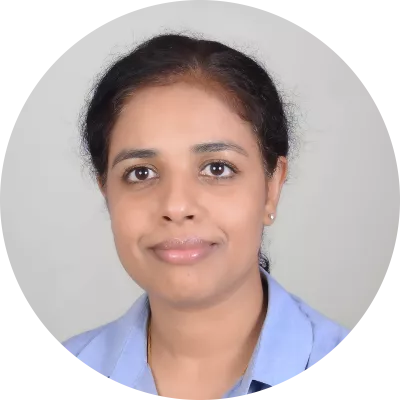Women researchers making waves in global health
Published March 29, 2023
Women’s History Month and International Women’s Day provide an opportunity to celebrate the achievements of women and recommit to accelerating gender equity. Yet less than 30% of researchers worldwide are women, according to data from the UNESCO Institute for Statistics. Throughout the month of March, female researchers in the IHME community will share their experiences working in global health, reflect on their accomplishments, and offer career advice to fellow researchers.
Responses were lightly edited for clarity.

Dr. Luisa Flor
Dr. Flor first arrived at IHME as a visiting scholar from Brazil in 2015. Seven years later, she became an assistant professor at the Institute. Dr. Flor was the co-lead author on last year’s Lancet study quantifying the widening gender gaps caused by indirect impacts of the COVID-19 pandemic and has also contributed to several articles in Think Global Health on the risks of tobacco use.
The career advice she’d give to others is something she follows herself. “Life is easier when you work in the area of your passion. To prepare presentations, to model and to understand results of something you’re passionate about is a wonderful thing,” Dr. Flor said in an interview at the time of her faculty appointment. “Working with the Gender Equality Metrics team, I am over the moon. I get to work in my passion.”
Like many other women, Dr. Flor is unfortunately no stranger to gender-based workplace discrimination. “I think that it’s almost impossible to not have ever dealt with any discrimination in terms of gender. Especially in academia, discrimination is blatant,” she said. “There have been times that some of my reactions were seen as vulnerability, or I was questioned about whether or not I was strong enough or tough enough for this area. I have been in environments where it was frowned upon if you cried.”
Dr. Nafsiah Mboi

Dr. Nafsiah Mboi, an IHME board member and former Indonesian Minister of Health, is a pediatrician with decades of experience as a leader in global health. Throughout her career, she has given special attention to human rights, women’s and gender issues, HIV/AIDS, and children’s rights. Dr. Mboi has shaped policies around these issues on the international stage, serving as the Vice Chair of the Global Commission on Women’s Health from 1992 to 1999, Chair of the UN Committee on the Rights of the Child from 1997 to 1999, and Director of the WHO Department of Gender and Women’s Health from 1999 to 2002.
In recent years, Dr. Mboi has been passionate about increasing Indonesians’ contributions to both domestic and international academic journals. She and her Indonesian team published two papers in The Lancet journals in collaboration with IHME – one in 2018 about the state of health in Indonesia at the country level and another in 2022 examining the burden of disease in each of Indonesia’s 34 provinces – and were among the first Indonesians to do so.
“Before we came, Richard Horton [editor-in-chief at The Lancet] investigated. He came and said, ‘You know, Indonesia has a population of 270 million. You know how many Indonesians have an article in The Lancet? Zero,’” Dr. Mboi recounted.
She hopes that their papers in The Lancet will inspire other Indonesian researchers. “I keep pushing people here that this is important. So the two articles with IHME – one accepted by The Lancet and one accepted by The Lancet Global Health – can really help stimulate people to say, ‘Well if Ibu Naf can do it, we can too.’”
Authia Gray

Authia Gray’s lifelong interest in biology, chemistry, and mathematics led to her current position as a Post-Bachelor Fellow (PBF) at IHME. As a PBF, she’s simultaneously pursuing her master’s degree in health metrics sciences while running complex data models with the Causes of Death research team, led by professor Mohsen Naghavi.
Upon arriving at IHME, she dove straight into the high-profile antimicrobial resistance (AMR) project. “I was able to start modeling with cause of death data right away within my first year, which was very exciting and terrifying, but also a great opportunity,” said Gray. She became a co-author on the landmark Lancet paper on global AMR burden and subsequent papers on AMR in the WHO European region and the global burden of bacterial infections. She calls working on the AMR project and seeing its subsequent policy impact the biggest accomplishment of her career so far.
The woman in STEM Gray admires the most? Former IHME researcher Fablina Sharara, whom Gray credits for building her confidence in leading the models that produce fatal outcome estimates. “When I first joined IHME, Fablina was the preeminent female researcher on my team. It was really wonderful to see someone who's so competent and skilled be so willing to fight for her results. She was committed to what she believed in and uplifted everyone on the team, while being one of the most brilliant people I've ever met,” praised Gray.
For those interested in pursuing an academic research career, Gray acknowledged that costs can be an obstacle. “Education is really powerful for women, but finances can be a huge barrier to achieving that education,” she said. She suggests US community colleges as a potential avenue. “I was at a community college first before transferring into a four-year university, and community college is a great path for those who might not have an abundance of financial resources. Even if the degree isn’t one-to-one with what you want, community colleges connect you with PhDs and other folks in academia who are great advisors for getting into research positions and finding the next path.”
Dr. Anamika Pandey

GBD Collaborator Dr. Anamika Pandey is a rising star in global health, winning the GBD Emerging Researcher Award last year for her innovative burden of disease research. As a Research Associate at the Public Health Foundation of India, she was the first author on The Lancet Planetary Health study assessing the magnitude of air pollution’s health and economic impacts for every state in India. Dr. Pandey has also contributed to many other GBD India publications, including a paper on the burden of child and maternal malnutrition – an area she’s particularly interested in.
For others looking to follow in her footsteps, Dr. Pandey recommends keeping all options open. “Setting up a goal and being focused on it is good, but remember not to be so engrossed that you lose track of the environment and world around you,” she said. “There are a lot of areas to be explored, new paths to tread, and new ideas to be generated, so be open to everything that comes your way and think of new ways to help the world with whatever you do.”
Dr. Pandey hopes that in the future, there will be more women stepping into leadership positions and focusing on women’s health. “Young female researchers have the responsibility of bringing research on women’s health to the forefront and broadening the approach to women’s health and well-being, as this has been a neglected area for far too long,” she said. “I think more and more women researchers should take up leadership roles in global public health and create an environment that would facilitate women’s participation and enable them to reach their full potential.”
Dr. Alize Ferrari

“For me, Women’s History Month is a time to celebrate the diversity of women's lived experiences and contributions to my field of work to create opportunities for future generations of female epidemiologists and mental health researchers,” said Dr. Alize Ferrari, IHME affiliate assistant professor.
Dr. Ferrari herself has made significant contributions to research in the field of mental health. She leads the Global Burden of Disease (GBD) team based at the Queensland Centre for Mental Health Research, which produces estimates for depression, anxiety, and a variety of other mental disorders. Dr. Ferrari has been named to Clarivate’s Highly Cited Researchers list three years in a row, demonstrating her papers’ extraordinary influence. She credits the GBD Study for providing a platform to reach and engage with a wide range of audiences and stakeholders around the world.
“Mental disorders are a leading cause of disability worldwide, and responding to this burden continues to be a challenge. The program of work I have been fortunate to be involved in over the last decade provides the opportunity to make an impact on improving the mental health of entire populations,” said Dr. Ferrari. “It has enabled us to emphasize mental health’s position within health policy agendas and demonstrate that to improve the overall health of the population, their mental health needs must be considered.”
